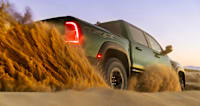Mazda has finally gone official with its all-new BT-50 ute, but with the model now sharing the same platform as the Isuzu D-Max, what exactly is the difference between the two?
Some details on both models are still being kept a secret until closer to their market launches later thsi year, but there is still more than enough out there to start working out of you are team Mazda or team Isuzu.
Exterior styling
.JPG)
Even at a glance, the Mazda BT-50 and Isuzu D-Max are easily distinguishable thanks to widely different styling.
Most of the exterior sheet metal is all Mazda, with a chrome-trimmed front grille lifted almost directly off the likes of the CX-5 and CX-9 SUVs.
Horizontal slats also emphasis the BT-50’s girth, while headlights and the front bumper also stay in line with the design philosophy of Mazda’s other models.
In profile, the differences are a little more subtle, with Mazda claiming slightly different door scallops.
The new BT-50 also has different wraparound tail-lights when compared with the new D-Max, while the tail-gate is unique to Mazda.
Interior
.JPG)
Inside, the BT-50 and D-Max are much more closely aligned than the exterior, save for a few small touches.
From the driver’s seat, both steering wheels are the same, barring the obvious change in logos, while instrumentation is also mirrored between the Mazda and Isuzu.
Expect to see different start-up animations for the driver display though.
Similarly, the multimedia screens are also the same, as is the switchgear and air-conditioning controls.
So, what is different? Mazda has redesigned the air-vents in the BT-50 with a unique shape, which has also led to a tweak of the dashboard lines to suit.
Soft-touch materials are also fitted to the armrests, centre console and top of the dashboard, but these components are likely reserved for higher-spec (and more expensive) grades.
Engine and transmission
.JPG)
Both Mazda and Isuzu utes will be offered with a 3.0-litre turbo-diesel four-cylinder engine, with outputs matched at 140kW/450Nm.
The engine feeds power to the road via a six-speed automatic transmission, but it remains to be seen if there will be a manual version of the BT-50 like there is with the D-Max.
4x2 and 4x4 options are expected to be available across both Mazda and Isuzu models, as well as dual-cab, single-cab, space-cab and cab-chassis body styles.
Fuel economy and carbon dioxide emissions are also expected to be similar for the BT-50 and D-Max, though exact figures are yet to be released.
Braked towing and payload should also be matched, around 3500kg for the former and 1000kg for the latter.
Suspension
.JPG)
Details on the suspension for both models are currently scarce, but we do know both will be underpinned by a ladder-frame chassis with leaf-sprung rear suspension for better load-lugging capabilities.
Mazda is remaining mum on the BT-50’s suspension componentry until the new model is closer to its Australian launch.
However, with Australia being the lead market for the BT-50, Mazda could have made small tweaks to better suit local conditions.
Warranty and aftersales support
.JPG)
Mazda and Isuzu are yet to confirm local warranty offerings for its new utes, but if the BT-50 and D-Max fall in line with current assurance periods it will mean five years/unlimited kilometres and six years/150,000 kilometres respectively.
This means it might be better to go for the Mazda if you are traveling long distances, despite Isuzu offering the longer warranty period.
However, Mazda has around 134 showrooms dotted throughout Australia, compared to Isuzu Ute’s 156 sales, servicing and parts outlets.
Mazda technicians will no doubt get training on all the oily bits of the new BT-50, but service convenience will be determined by your location.
Pricing and availability
_0.JPG)
Neither the new Mazda BT-50 or Isuzu D-Max have been priced at the time of writing.
However, if the new versions fall in line with pricing of the existing models, the Isuzu D-Max could sneak under the BT-50 as the cheaper model.
Isuzu's D-Max currently kicks off from $28,600 before on-road costs, while the cheapest Mazda BT-50 is $29,060.
Naturally, prices will vary depending on driveline, body style and specification, but we won't know full details until later closer to each model's respective local market launch.
At this stage Isuzu has pencilled in a September on-sale date for its D-Max, while Mazda is targetting a "late 2020" arrival.







.jpg)
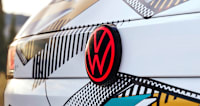

.jpg)
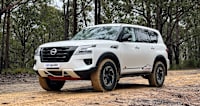

.jpg)
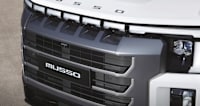





.jpg)
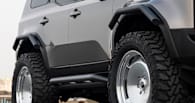
.jpg)


